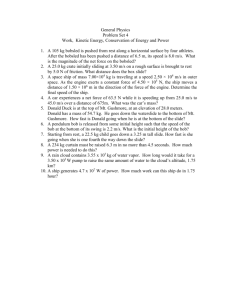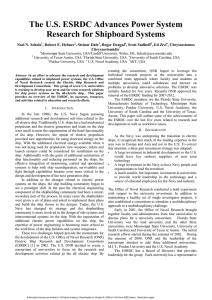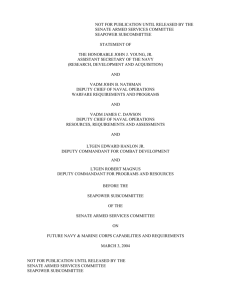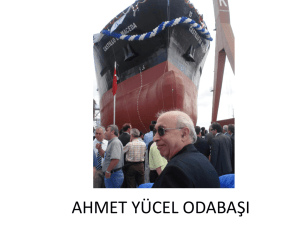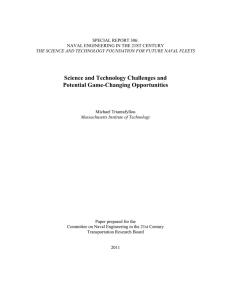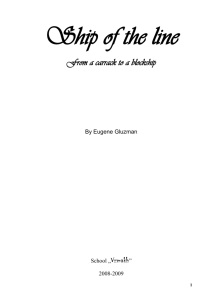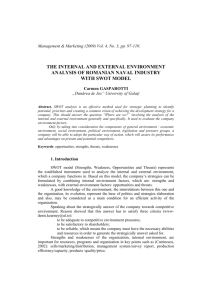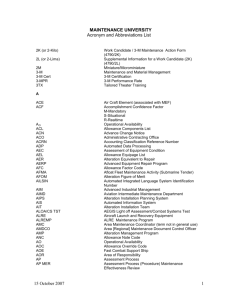Naval Construction and Engineering Program
advertisement
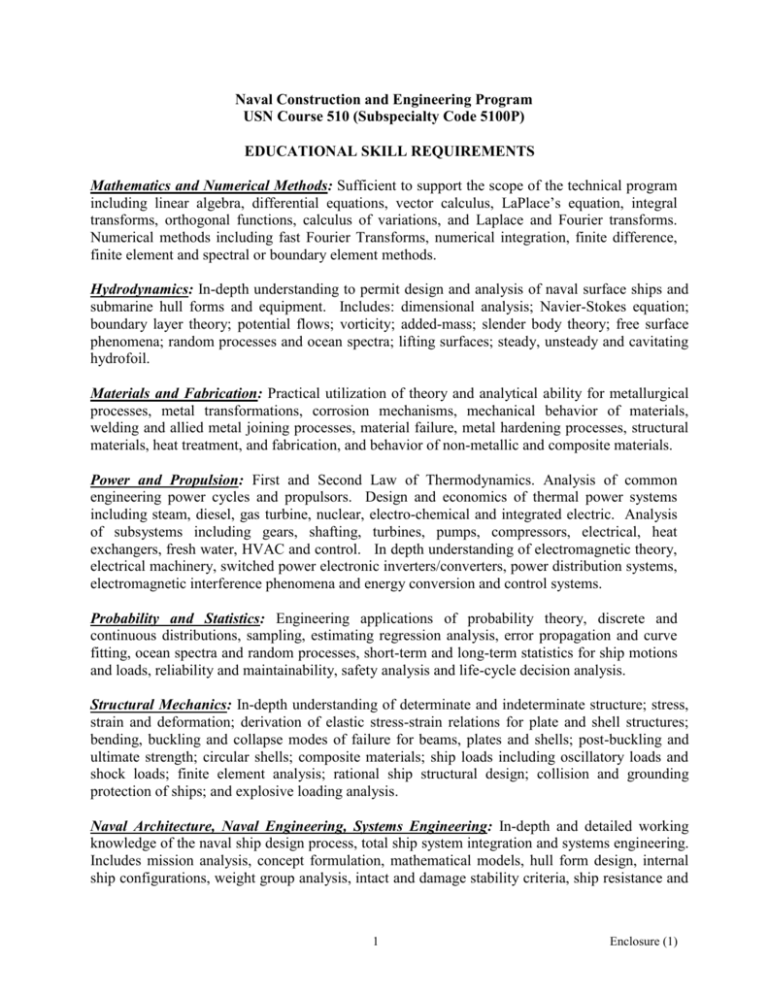
Naval Construction and Engineering Program USN Course 510 (Subspecialty Code 5100P) EDUCATIONAL SKILL REQUIREMENTS Mathematics and Numerical Methods: Sufficient to support the scope of the technical program including linear algebra, differential equations, vector calculus, LaPlace’s equation, integral transforms, orthogonal functions, calculus of variations, and Laplace and Fourier transforms. Numerical methods including fast Fourier Transforms, numerical integration, finite difference, finite element and spectral or boundary element methods. Hydrodynamics: In-depth understanding to permit design and analysis of naval surface ships and submarine hull forms and equipment. Includes: dimensional analysis; Navier-Stokes equation; boundary layer theory; potential flows; vorticity; added-mass; slender body theory; free surface phenomena; random processes and ocean spectra; lifting surfaces; steady, unsteady and cavitating hydrofoil. Materials and Fabrication: Practical utilization of theory and analytical ability for metallurgical processes, metal transformations, corrosion mechanisms, mechanical behavior of materials, welding and allied metal joining processes, material failure, metal hardening processes, structural materials, heat treatment, and fabrication, and behavior of non-metallic and composite materials. Power and Propulsion: First and Second Law of Thermodynamics. Analysis of common engineering power cycles and propulsors. Design and economics of thermal power systems including steam, diesel, gas turbine, nuclear, electro-chemical and integrated electric. Analysis of subsystems including gears, shafting, turbines, pumps, compressors, electrical, heat exchangers, fresh water, HVAC and control. In depth understanding of electromagnetic theory, electrical machinery, switched power electronic inverters/converters, power distribution systems, electromagnetic interference phenomena and energy conversion and control systems. Probability and Statistics: Engineering applications of probability theory, discrete and continuous distributions, sampling, estimating regression analysis, error propagation and curve fitting, ocean spectra and random processes, short-term and long-term statistics for ship motions and loads, reliability and maintainability, safety analysis and life-cycle decision analysis. Structural Mechanics: In-depth understanding of determinate and indeterminate structure; stress, strain and deformation; derivation of elastic stress-strain relations for plate and shell structures; bending, buckling and collapse modes of failure for beams, plates and shells; post-buckling and ultimate strength; circular shells; composite materials; ship loads including oscillatory loads and shock loads; finite element analysis; rational ship structural design; collision and grounding protection of ships; and explosive loading analysis. Naval Architecture, Naval Engineering, Systems Engineering: In-depth and detailed working knowledge of the naval ship design process, total ship system integration and systems engineering. Includes mission analysis, concept formulation, mathematical models, hull form design, internal ship configurations, weight group analysis, intact and damage stability criteria, ship resistance and 1 Enclosure (1) powering, launching and grounding forces, ship dynamics including maneuvering and sea keeping, ship survivability and weapons effects, and model testing. Application to submarines, displacement ships and advanced marine vehicles. Combat system fundamentals adequate to support total ship integration including: communications, radar and sonar theory; current threat and operational requirements; current systems (AAW, ASW, ASUW, MCM, Strike); system performance and effectiveness analysis; system modeling; functional flow diagrams and architecture; EMI; topside and internal design. Computer aided design including representation of 3-D objects and graphical display systems. Design of experiments, optimization methods and decision making models. Ship Production: Modern ship production methods in a total ship system and concurrent engineering context. Includes basic fabrication and material handling processes, design/production integration, build strategy, group technology, zone construction, shipyard layout, CAD/CAM, accuracy control, process planning, scheduling and dynamic modeling. Understand design concepts to enhance producibility and reduce cost/environmental impact. Advanced Technical Options: Advanced theoretical subjects to form a basis for specialization in one of the areas of concentration or an additional area of concentration related to Naval Engineering. Thesis: An engineering-oriented thesis demonstrating a thorough understanding of the basic theories with application to naval engineering. COMNAVSEASYSCOM DATE 2 Enclosure (1)




